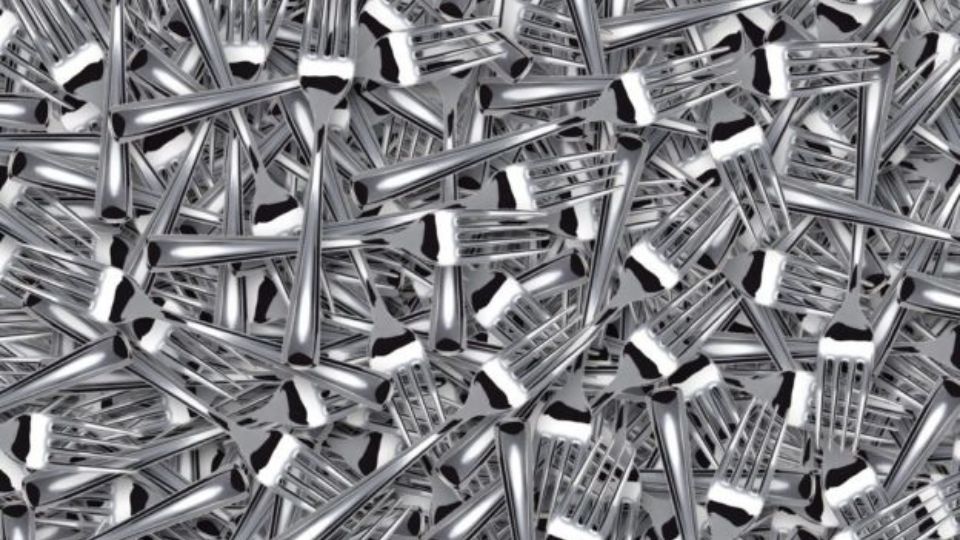What is lab-grown cultured meat?
Lab-grown meat or “cultured meat” is meat that is manufactured using cell culture and tissue engineering techniques.
Taking a small number of cells from living animal tissue and growing them in a controlled environment to create a food product is an emerging area of food science. Advancements in cell culture technology enable food developers to use animal cells obtained from livestock, poultry, or seafood in food production. This kind of lab-cultured meat product is already on the market.
Cultured meat Science
Scientists typically start with a sample of cells from the tissue of an animal, a process that typically does not permanently harm or kill the animal. Some samples’ cells are selected, screened, and grown to make a “bank” of cells to store under very strict freezing techniques for later use.
To make cultured meat-based food, a small number of cells are taken from the cell bank and placed in a tightly controlled and monitored environment that supports growth and cellular multiplication by supplying appropriate nutrients, oxygen, and other factors.
After the cells have multiplied many times into billions or trillions of cells, additional growth factors are added to the controlled environment to enable the cells to differentiate into various cell types and assume characteristics of muscle, fat, or connective tissue cells.
Once the cells have differentiated into the desired type, the cellular material can be harvested from the controlled environment, collected, purified from the growth medium, and prepared using conventional food processing and packaging methods.
Advantages of lab-grown meats
Cultured meat is expected to have various benefits over conventional animal agriculture because of its more efficient production process.
Prospective life cycle assessments indicate that cultivated meat:
- Will use less land and water
- Emit fewer greenhouse gases
- Reduce agriculture-related pollution and eutrophication
This shift will mitigate agriculture-related deforestation, biodiversity loss, antibiotic resistance, zoonotic disease outbreaks, and industrialized animal slaughter.
Disadvantages of lab-grown meats
There are ethical concerns raised with the production of cultured meat.
The procedure is in vitro, but fetal bovine serum is used, which shows the cruelty-free motto is misleading and contradicts the aim, so it may not be a choice for vegans or vegetarians.
Bovine fetuses are taken from pregnant cows by slaughtering the animal. Fetuses are made sure to remain alive to maintain the blood quality, drawn out through a cardiac puncture. Whole blood is drained out, which takes an average of five minutes, leading the fetus to death. This process is inhumane as fetuses are in extreme pain and discomfort when the fetus’s blood is extracted, raising moral and ethical concerns.
In addition, bovine serum and other animal-based mediums can pose contamination risks that can lead to diseases such as mad-cow disease.
On the other hand, synthetic cell growth mediums, although more expensive, can be adopted in the cultured meat industry instead of the traditional bovine serum.
Livestock and farm animals produce hormones and growth factors to support growth and development. Hence, the culture medium will need these hormones to sustain cell growth. The hormones might not be able to be produced on an industrial scale.
Even if possible, there might be short- and long-term effects that have not been discovered yet.
The European Union prohibited hormone growth promoters, raising grave concerns about the acceptability of cultured meat. Chances of dysregulation of cell lines may be higher when cell multiplication is conducted at a commercially viable mass level.
Before mass production, intensive research must be conducted to monitor the adverse effects on muscle cells and human metabolism.
The difference between cultured meat and plant-based meat
Plant-based meat cannot be called exactly meat.
These meat-like products are based on proteins extracted from plant sources such as soybean, wheat, pea, and other food additives for achieving a meat-like texture and taste.
On the other hand, cultured meat is based on animal muscle and fat cells, being cultured and proliferated using a growth medium in controlled conditions and harvested, finally being used with food additives to achieve the taste and the texture and actually become “a slice of meat”.
Competition from plant-based meat alternatives weakens the market outlook for cultured meat.
Plant-based meat
Here are some interesting facts about plant-based meat:
- Plant-based meat originates from plants and is processed to look, feel, and taste like conventional meat from animals
- Plant-based meat is not necessarily healthier than regular meat because of its lower calories, but on the other hand, it is processed food and usually has high salt levels due to shelf-life issues. Plant-based meat is healthy if eaten in a decent amount.
- The components of plant-based meat include coconut oil, vegetable protein extract, and beet juice.
- Plant-based meats such as nuggets and patties are widely sold in the market.
- Conventional meat has an impact on the environment and the health of consumers overall. By replacing all conventional meat with vegetarian alternatives, massive carbon dioxide emissions can be saved.
- When animal product consumption decreases, water shortage can be prevented since most freshwater is used for livestock production.
Contamination risks in cultured meat processes
The most common forms of contamination are from adventitious agents such as bacteria, fungi, viruses, or cell cross-contamination, with some concern for transmissible spongiform encephalopathies.
For example, a “foreign” cell (such as E-coli / bacillus bacteria) may take over the entire culture because:
- The nutrients are very rich
- Good growing conditions such as temperature and oxygen
- Higher multiplication rate (E. coli double itself once in 20 minutes).
It should also be known that any cell lines that are banked will have already been screened for contamination of adventitious agents before being cryopreserved, as is standard in the industry.
Prevention of adventitious agents entering bioreactors during the bioprocess and robust monitoring systems will ensure product safety.
Spectroscopic sensors to detect bacterial contamination may be utilized, as well as other methods such as polymerase chain reaction or immuno-based assays for detecting specific contaminants or foreign adventitious agents.
While sterility is ideal, it is possible that acceptable non-adverse contamination can occur, and there is always a risk for contamination events.
Although antibiotics and antimycotics can be used for both treatment and prevention, they can lead to variations in gene expression, mutations, proliferation, and differentiation.
Proper practice of aseptic techniques, GMP, and quality principles implementation such as preventative actions and proper controls, sterilization strategies, and antibiotic and/or antimycotic use in cell culture mediums are unnecessary. As such, they will not be included in a cultivated meat bioprocess. It is possible that antimicrobials may be used in maintaining aseptic surfaces.
The cultured meat industry can adopt different approaches from the bio-pharmaceutical industry to avoid these contamination risks, for example:
- Aseptic processes
- Sterility
- Hygienic design
- Clean rooms
- Good Manufacturing Practice (GMP)
Bioreactors used in cultured meat production processes
A bio-reactor is a vessel that can be used to grow live microorganisms in a controlled environment.
Most bioreactors are isolated from the outer environment and supply nutrients and essential gases such as oxygen and include an agitation system, pH control, etc.
Different components of the bioreactor and control and design features are susceptible to the entry of various contaminants and thus require preventative barriers to entry, which maintain the sterile boundary.
Most of these bioreactors systems are defined as a “closed system” with minimal environmental contamination risk.
For gas or medium inlets and outlets, various membrane vents or filters can be used to capture potential contaminants via size exclusion. For instance, a 0.22-micron pore size filter permits a steady flow of gases and fluids but will prevent the passage of cells as small as bacteria. Smaller pore-size filters also exist for viral retention.
Filters for the medium are used primarily when steam sterilization may potentially damage heat-sensitive ingredients in the medium.
Gas filters are commonly made of hydrophobic membranes such as PTFE to prevent the passage of aqueous aerosols.
These filters and other connective parts are commonly made of materials that can themselves be sterilized via gamma irradiation or autoclaving to ensure they are free of contaminants upon installation.
Other forms of sterilization used in the food industry, such as pulsed electric fields, which cause cellular permeabilization, may be adapted to prevent bacteria and bacterial spore contamination of cell culture media.
Additionally, high-temperature short-time pasteurization, also known as “flash pasteurization”, can be used to inactivate viruses but similarly poses some threat to heat-sensitive ingredients.
Cultured meat product Microbial and Toxins testing
USDA-FSIS inspectors will review batch records produced during cell culturing and verify compliance with applicable USDA-FSIS regulatory requirements during product processing, packaging, and labeling to verify the cellular food products are safe, wholesome, unadulterated, and truthfully labeled.
If cells are shipped to other establishments for further processing into human food products, these establishments also will be subject to USDA-FSIS inspection.
USDA-FSIS cell harvest and processing inspection will occur at least once per shift. The inspection frequency is also required for processing traditional meat and poultry products.
This level of verification is necessary for cultured meat products to receive the USDA mark of inspection. Finally, the USDA-FSIS will ensure that cell-based products are labeled truthfully and consistently with coordinated FDA and USDA-FSIS principles for product labeling and claims. Under the requirements of the FMIA and PPIA, all labeling of human food products made from the cultured cells of livestock or poultry must be pre-approved by FSIS.
FDA cultured meat regulatory considerations and drafts
In March 2019 the USDA and FDA announced an agreement to jointly manage cultured meat.
The FDA will oversee the collection of stem cells, the management of cell banks, cell growth, scaffold or other tools used, and cell differentiation.
At this point, the USDA will take over and oversee the processing of cultured tissue into the meat and the labeling of the final product.
Under this agreement, cultured meat facilities are subject to FDA inspections rather than having on-site USDA inspectors like abattoirs and meat processing plants.
The final meat product, however, is subject to the same safety standards and labeling requirements as any traditional meat product. This USDA/FDA agreement covers all cultured meat derived from livestock and poultry, so other cultured meat products, like cultured seafood, fall under FDA oversight alone.
FDA’s approach to regulating products derived from cultured animal cells will involve a thorough pre-market consultation process and quality inspections of records and facilities.
The FDA will ensure that covered entities comply with applicable requirements, including facility registration and FDA’s Current Good Manufacturing Practices (cGMP) and preventive control requirements.
The pre-market consultation process includes evaluating the production process and produced biological material, including tissue collection, cell lines, and cell banks, manufacturing controls, and all components and inputs.
After a successful pre-market safety consultation, the FDA intends to conduct routine inspections on an ongoing basis, as well as other oversight activities at cell banks and facilities where cells are cultured, differentiated, and harvested.
These inspections will help to ensure that potential risks are being managed and that biological material exiting the culture process is safe and not adulterated within the meaning of the FFDCA.







